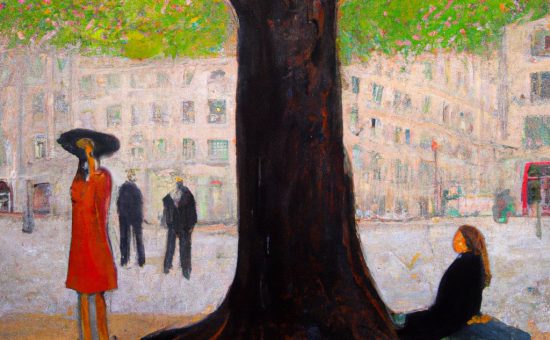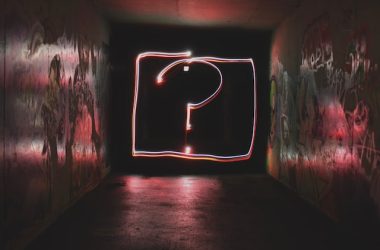The other day I spoke about reflection to a journalism class — rather ineloquently, I am afraid, in time stolen from another session. I came nowhere near doing it justice.
I spoke of it because reflection is one of those academic requirements that many journalism practitioners — most, I dare say— stumble on when they step into a master’s or even a doctoral degree. It sounds easy. It isn’t. Not quite.
In theory, we all know what reflection is. It is an intentional attempt, as John Dewey puts it, to understand our experiences of a specific situation. It is contemplating our thoughts, actions to develop a better understanding of our object of focus — our newswork, our journalism artefact, or whatever it is we have chosen to reflect on.
Why bother with reflection? To learn, to improve our work, to make better future decisions (and, yes, to grab those few marks for that graded assignment). Reflecting on what we did allows us to figure out why and how we did what we did (!) and how we can do what we did better the next time we do it!
Reflect well, and we get to know such deep stuff as what we don’t know we know; what we don’t know we want to know; and what we think we know but don’t actually know.
If we really outdo ourself, and venture a little into the nearby realm of reflexion (it is a cousin to reflection, mind, not a brother), we might also begin to chase how we know what we know, and how we know that, and so on and on, till, eventually, we either braid ourselves into inextricable knots or emerge enlightened like the Buddha after the bodhi tree.
Point is, reflection is potent stuff, a portkey to different place of understanding — use it well, and you get to desirable destinations.
So how do we go about unleashing this magic? Multiple ways, and multiples models you could hitch your wagon to — the oft-cited among these include models put forward by David Kolb and the more nuanced, six-step cycle from Graham Gibb.
There’s also a more simpler path, in John Driscoll’s 3 Whats (see Chapter 4 for a quick read of different models, and here’s a cheatsheet), though, in my view, Donald Schon’s work on distinguishing reflection-in-action and reflection-on-action is particularly useful.
On journalism degrees, including practice-based PhDs and Professional Doctorates, what’s called for (largely) is reflection-on-action. That is, reflection performed after an event — say, the production of a longform, or a podcast, or a video documentary. ‘After the event’ doesn’t necessarily mean you wait for 12 weeks of production and post-production to finish before you start reflecting, though (those doing journalism projects now, do take note). Just that you are looking back at the main event in the rear-view mirror, in instalments — as a series of mini-reflections at frequent intervals — and pulling together those pieces, which you might have captured in some way (project log, auto-ethnography, self-interview whatever floats your boat) into a wholesome piece.
Reflection-in-action, on the other hand, is a bit like the mindfulness we hear about so much these days. It is in-the-moment noticing, and considering, and correcting course as required. In a notoriously ‘anti-reflective profession’ like journalism, it is a difficult skill to put into practice. It’s what editors and bureau chiefs value, and articulate differently — perhaps as“thinking on your feet”.
I suppose one reason why many journalism courses place such stock on reflection-on-action is in the hope that such an exercise, over time, would develop the skills needed for reflection-in-action. Think of reflection-on-action as a training, a course in a cognitive choreography, which, by repetition on repetition, you make part of you. It allows you to drive auto-pilot most of the time, with the ability to switch to manual, fluently, in control, when there’s a stumble.
I spoke of the Buddha under the bodhi tree earlier. Allow me to use him for a few example reflections.
Imagine the Buddha has just woken up from his meditation — Enlightened! What if we were to ask him to reflect on his transformation? Here’s how that could go:
A shallow reflection
by S Gautama
As I opened my eyes, I remembered I was in Bodh Gaya, in Patna, still sitting under the bodhi tree. I felt a profound sense of peace and clarity. I had found the path to liberation for all beings! I looked around, and at myself, and noticed the birds above had been rather unkind to me. I didn’t mind. I was filled with joy and gratitude for the insights that had arisen in me. I knew that my teachings would help others find the way to freedom and happiness. I realised I had attained enlightenment!
That didn’t sound too enlightening, particularly for the Buddha. Descriptive, barely scratching the surface. Let’s get the Buddha to try again.
Here’s a second stab:
Not-so-shallow reflection by S Gautama As I opened my eyes, I felt a profound sense of peace and clarity wash over me, and I remembered where I was - in Bodh Gaya, in Patna, still sitting under the bodhi tree. As I observed my surroundings, I noticed the birds had been rather unkind. However, this did not disturb my inner state of mind, which was filled with joy and gratitude for the insights that had arisen during my meditation. I reflected on the path I had taken to reach this point; and the years of diligent practice and self-inquiry that had led me to this moment of enlightenment. I realised that my teachings would be useful not just to me, but to others as well. I could help people find their way to freedom and happiness. I felt a deep sense of compassion and responsibility towards all beings. My enlightenment was not just a personal achievement, but a call to service and a reminder of the interconnectedness of all things.
This one, I am sure you will agree, has more muscle to it. But still, miles from where the Buddha could go (I believe in his potential, I do). Let’s ask him for a bit more heart:
A deep reflection by S Gautama This profound sense of peace and clarity that wash over me, where did it come from? I am still here, in the same place in Bodh Gaya, where I was, sitting under the bodhi tree. I am still me… but not just me. I am more (still hungry, though.) How did I get to this state of mind? What has happened within me to make me so? Perhaps it is that I have changed, not just spiritually but cognitively too. Perhaps the spiritual change has changed my cognition and my emotions — which has changed my physicality. Or it could be the other way round? Or perhaps the changes have been — what’s that word those scholars use? — yes, iterative, that is it, iteratively. There is a lot of research around such changes. I remember reading the works of Aaron Beck and Albert Ellis, and this connects well to their idea that thoughts and beliefs and emotions and behaviours all interact. Perhaps that’s what happening to me. My patterns of thinking have changed. There is less negativity and worry in me now, greater peace, happiness and harmony. If I have changed spiritually, how has that come about? Is it merely through my meditation practice? There is evidence that meditation and self-reflection can have powerful effects on the brain and the body. Mindfulness can improve attention, reduce stress and anxiety, and even lead to changes in brain structure and function. So it is possible that my practice of meditation and self-inquiry has led me to this point of transformation. Wait, my transformation, what does that mean? What have I actually learnt? I now know about suffering. I now know it is inherent to life, inescapable. So instead of fighting it, let’s accept it. What a liberating thought. It is so sick! I now realise the truth of suffering; the truth of the cause of suffering; the trust of the end of suffering; and the truth of the path that leads to the end of suffering. I will call them the Four Noble Truths. Yes, that’s a good name. It will stick in people’s minds, which is very important when it comes to creating impact with what I have learnt. My enlightenment was not just a personal achievement, I have realised. I can do good with it. Real good for the world. It is a call to service and a reminder of the interconnectedness of all things. All beings, I have come to realise, are connected in their experience of suffering, and that through the practice of compassion and wisdom, it was possible to alleviate this suffering. I feel a deep sense of compassion and responsibility towards all beings, and a commitment to share my insights and teachings with the world. I must teach the world to accept life as it is... PS: My reflection can be particularly useful for journalism students. Journalists have the power to shine a light on the suffering and injustices of the world. They can promote compassion and empathy in their readers. So reflect well, my young friends, be mindful of what you do, how you do it, and why you do it — because you have the power, with your words and framing, to influence public perception and attitudes. PPS: I have included some colloquialisms in my reflection. I reflected on why I did that, and I have come to the conclusion that it may help me connect with my young audiences better. See Bucholz’s work on youth and cultural practice.
The Buddha has done a good job of digging deeper there. It’s a bit stream-of-consciousness in places, I think, a bit of reflection-in-action mixing in with reflection-on-action. Pretty good stuff. Now if you are wondering, hmm, how do I fit that into an academic essay, let’s try again. I am going to cheat a bit on this one, mainly because I want to introduce the Buddha to Chat GPT.
Here’s what we — Chat GPT, the Buddha, and I — came up after some careful co-creation:
What I learnt from my self-inquiry: a reflective essay with academic references by S Gautama A profound sense of peace and clarity had washed over me under the bodhi tree in Bodh Gaya. Despite being in the same physical location and being the same person, when I woke up, I felt like I was more, somehow. I began to wonder whether my spiritual transformation had also affected my cognition and emotions, or if the changes were iterative, building on one another in a complex way. The work of scholars who argue the interconnectedness of thoughts, beliefs, emotions, and behaviours support this idea (Beck, 1979; Ellis & Harper, 1961). As I considered what might have led to my transformation, I thought about my regular meditation practice and self-inquiry. Davidson et al (2003) and Tang et al (2015) argue that mindfulness could improve attention, reduce stress and anxiety, and even change brain structure and function. It seemed likely that these practices had played a role in my own enlightenment. During my time under the bodhi tree, I also came to understand what I later called the Four Noble Truths: the truth of suffering, the truth of the cause of suffering, the truth of the end of suffering, and the truth of the path that leads to the end of suffering. These truths could form the foundation of my teachings and my commitment to service. I realised that my enlightenment was not just a personal achievement anymore, but a call to share my insights with the world. I felt a deep sense of compassion and responsibility towards all beings, and I knew that by promoting compassion and empathy, we could alleviate suffering and find peace. My reflection can be particularly useful for journalism students. Journalists have the power to shine a light on the suffering and injustices of the world. They can promote compassion and empathy in their readers (Koops & Everett, 2019). As multiple media scholars have noted, journalists have the ability to frame issues in particular ways, which can influence public perception and attitudes (Entman, 1993). Therefore, it is important for journalists to reflect on their practice and be mindful of their use of language and framing techniques (Chalaby, 1996). By doing so, they can help to promote a more compassionate and empathetic society, and contribute to the alleviation of suffering in the world.
Every example above can be broken down, broadly, into three components: description (of the event), evaluation and analysis (of your performance, both physical and emotional), and change-ideas (potential next steps arising out of the core learnings from all of this).
The mix of these will determine the strength of your reflection. Lean more towards description — which is a common tendency among journalism cohorts, arising, in part, out of being drilled persistently in journalistic values such as objectivity, balance, etc, I suspect — and you end up with, well, descriptive writing.
Similarly, if you don’t do a good enough job of describing your experiencing — by that I mean if you don’t exposition your experience to yourself adequately — your evaluation and analysis will suffer. If you are not quite clear in your head on the what, in all its manifestations and individual sub-components, you don’t stand much chance of making sense out of it. This doesn’t mean you describe the heck out of your experience and write reels into your thesis or your essay, no. What goes on the paper need only be a much condensed version — just enough to provide context and foundation for your analytical components and sense-making, nothing more.
A good way to breathe more quality into your description, evaluation, and analysis — an approach that makes advantageous use of journalistic skillset — is putting together the 3Ws Model (Driscoll) with self-interview, a method we can borrow from memory studies. Self-interview, proposed by Emily Keightley, Michael Pickering and Nicola Allett, is an exceptionally powerful tool, in my experience, to dredge the barrel of your thoughts. It is pretty much what it says on the tin, and how it would work in this particularly scenario, is with you asking yourself questions, preferably over time — for memories often do not surface all at once — across all three of Driscolls Ws:
What happened? So what? Now what?
Think of going about it systematically. You could even employ the 5Ws here, I think, with particular attention to the What, How, and Why to keep you on track. What I am suggesting can be represented something like this:
3Ws x (5Ws + H) = DR where DR = Deep Reflection
Expanding that, and complicating it a bit by introducing ‘n’ to indicate focal points, it could look like this:
What Happened x (Who + Whatn + When + Where + Whyn + Hown) + So What x (Who + Whatn + When + Where + Whyn + Hown) + What Next x (Who + Whatn + When + Where + Whyn + Hown) = DR where the value of n is likely to be >1
More thought needs to go into the above, I acknowledge, so think of this as a crude template. Try it for size and let me know how it goes.
In the meantime, let me go, reflect further. 😀








